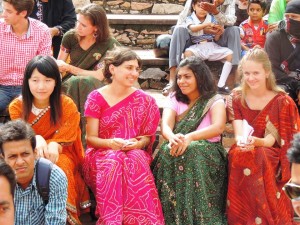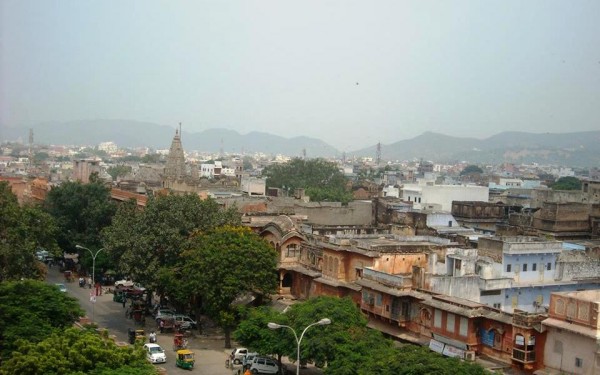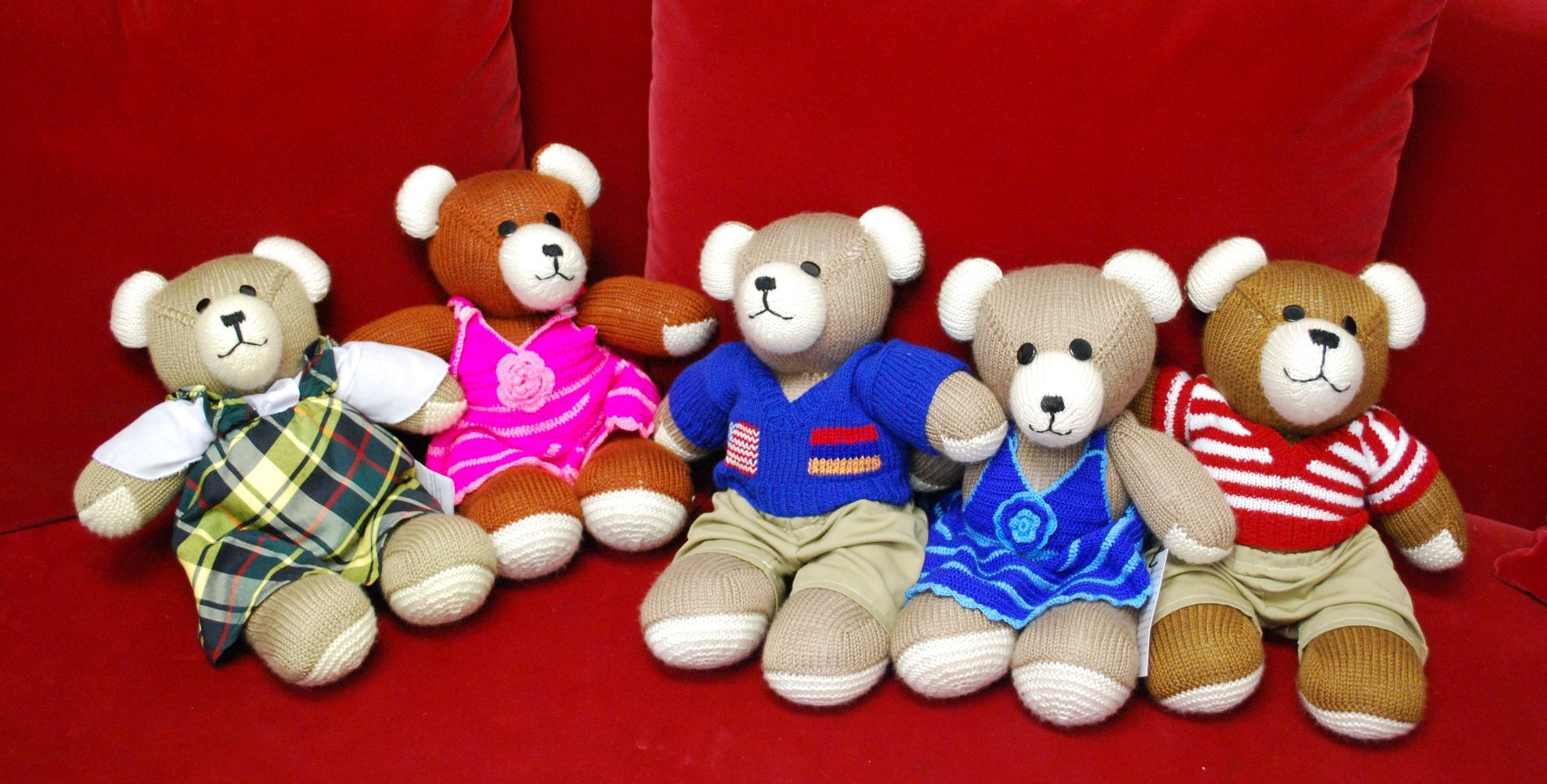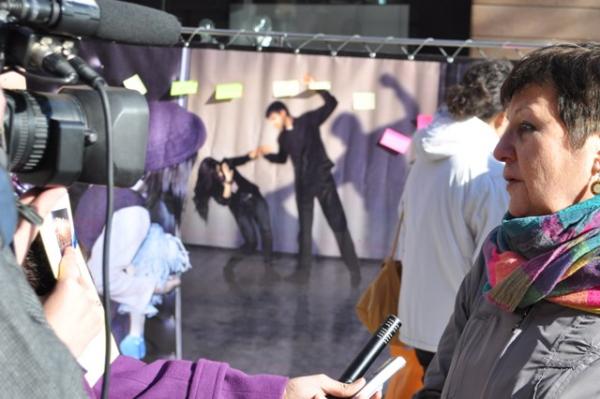Last year I lived in Jaipur, India for about seven months. I was teaching at a school. I took my time to travel and explore the North, South of India and of course Rajasthan province, the capital of which is Jaipur.
In ethnic, religious and cultural aspects India is a country of great diversity and I was able to see only a small part of it. So, whatever I tell about India is based on my subjective personal experience.
The school where I was working in, is situated in a rather poor and unsecured district. I had pupils whose parents didn’t have proper education and some of them didn’t even know the alphabet. There were also many craftsmen and salesmen caste representatives; I got acquainted to the culture of these classes through my colleagues and pupils. I had also more educated friends and acquaintances and they were representing different culture. I was living in a house with people from different countries and continents so I was also able to spend part of my time in that international atmosphere.
The first challenge that I faced in India was the discrimination towards women. Jaipur has a rather conservative society: most women stay at home and men are mostly in public places. For a woman, walking down the street by herself is a very unpleasant experience, it even feels like a humiliating trial.
Family as an institution is still a very strong concept in India. Because of the weak social role of the State, there is dependence from the family that often restricts the freedom of the individuals. We can consider the family as the employer since the income is a result of the family buisness. For example in case of illness or senility, the family is the responsible to take care of sick member. In other words, it would be very difficult for a single person to survive if he or she is driven out of the familly. Marriages in India are still arranged by agreements between families. It is very common for parents (usually the girl’s relatives) to find a “good groom” to marry their daughter. Therefore is not rare to ask whether someone is married by love or by agreement. The families negotiate with each other and arrange “the deal” which includes a dowry. The dowry issue is very complicated. I saw families taking loans equivalent to 10-20 years of the family income to get their daughters married. Not being married is considered to be a problem. Single women, of course, if they aren’t religious leaders, are usually driven out of the society.
 Despite these restrictions and discrimination there are also liberal women, involved with NGOs and undertaking legislative activities, lecturing, etc. It was also interesting to observe cases, where educated women executing important work in the social field, were totally changed after entering their husband’s family. For example, they preserve all the hierarchies in the relationship between the woman and her father-in-law or the husband’s brother: they cover their head and face, serve them, keep silence in front of them, etc.
Despite these restrictions and discrimination there are also liberal women, involved with NGOs and undertaking legislative activities, lecturing, etc. It was also interesting to observe cases, where educated women executing important work in the social field, were totally changed after entering their husband’s family. For example, they preserve all the hierarchies in the relationship between the woman and her father-in-law or the husband’s brother: they cover their head and face, serve them, keep silence in front of them, etc.
In India by observing a woman’s traditional clothing you may know almost everything about her social status, which casta she is from, if she is married, has a son or even if her husband is alive.
A mix between the lack of women rights and traditions has led to the dissemination of sex selective abortion. One of the main reasons of this practice is financial: to avoid the costs that families have to make to marry their daughters. Besides, in India as well as in our country the male child is considered as a keeper of the hearth. The main income is also earned by men, and women’s role is mostly domestic, in the kitchen. I also read that there is a type of “heaven” in hinduism, which can be reached only through having a male child because he has privalage of saying some prayers and doing religious ceremonies.
It was interesting to find out that Indian women are proud of their hair turning grey and adulthood, perhaps because the social status changes with the age. For example, if a woman has a son, after his marriage she can become mother-in-law and in a way “take revange of her youth from her son’s wife”. There are many jokes about quarells between son’s wife and mother-in-law, but also many lawsuits connected with domestic violence.
Along with such common phenomenon of objectifying women, discrimination, violence and preassure towads them, I met also excellent examples of strong women. The practice of “self-assistance groups” was a great discovery for me, we can say, this is an Indian phenomenon and exists in a very few places except this country. The average self-assistance group is organized by 10 women who create a fund out of their private savings and after some time they start providing the accumulated sum to the group members with 1 % loan and the benefit is equally divided among all the group members at the end of the year. Each group decides it’s working rules: how much percent of loan to take, for how long and as well as the budgets limit.
It is interesting that these women had supersede the banks who gave credits from the region not by force but by the strength of their organizing skills. 10 years ago, as it is now in our country, the banks suggested loans with 23-24 %.
Now, as women of many families are involved in this alternative system, banks aren’t needed any more. Moreover, in case of need, the groups functioning in different villages help each other providing money for communal or personal plans. They say there isn’t any case of unrepaid loans. Such results are reached through influence of different factors. Manly because the group members are from the same community, and if one of them is irresponsible, could lose all social connections.
The fact that there are only women in groups, increased their individual development, economical independence and their role in the family and society.
I would really like such initiatives to be realized also in Armenia. Usually we tend to look for solutions in the western world, though we can find answers to many social and economical issues in the east. Taking into consideration political and cultural similarities, their experiments may be better adapted to our country.
Nelly Arakelyan





… բավական հետաքրքիր էր…